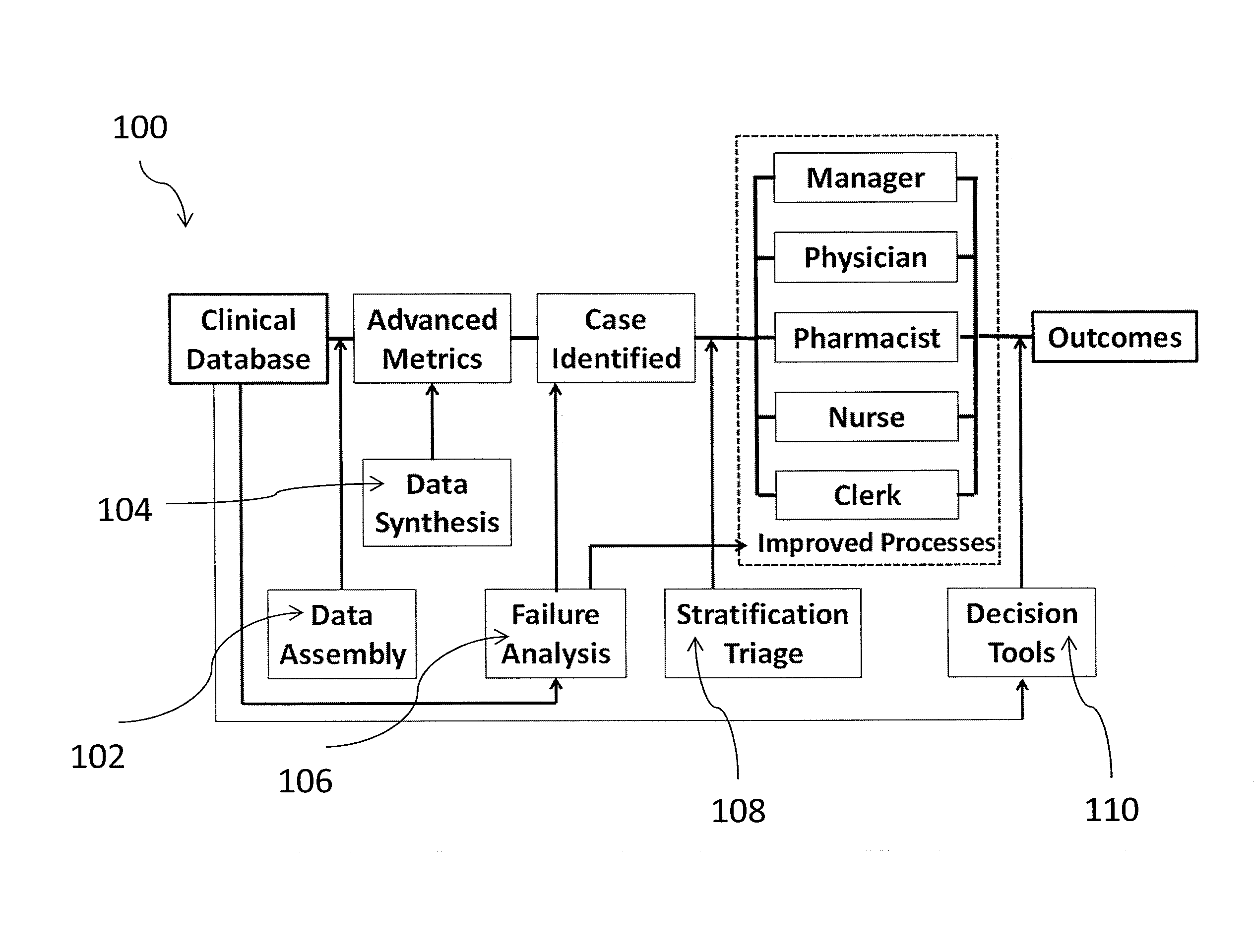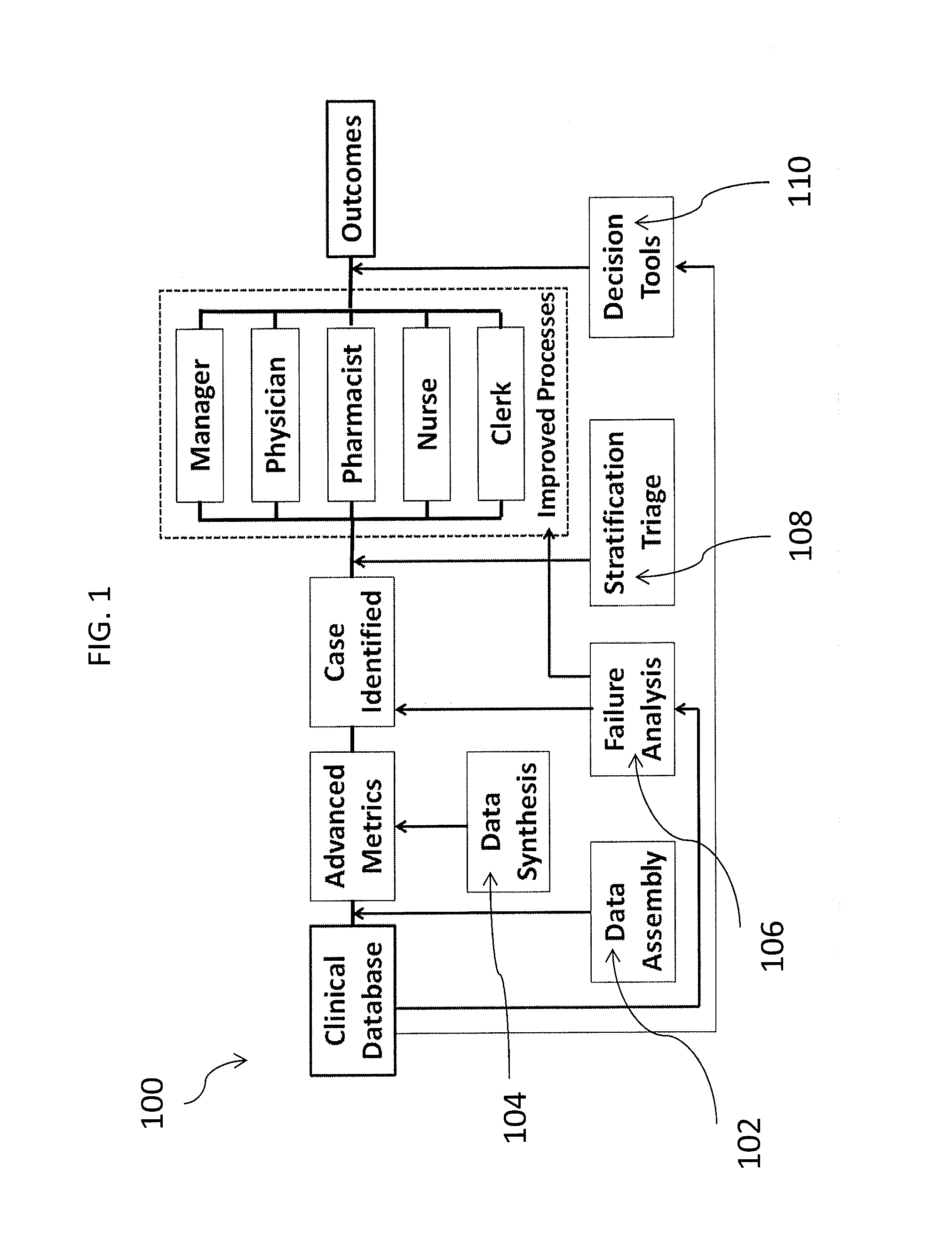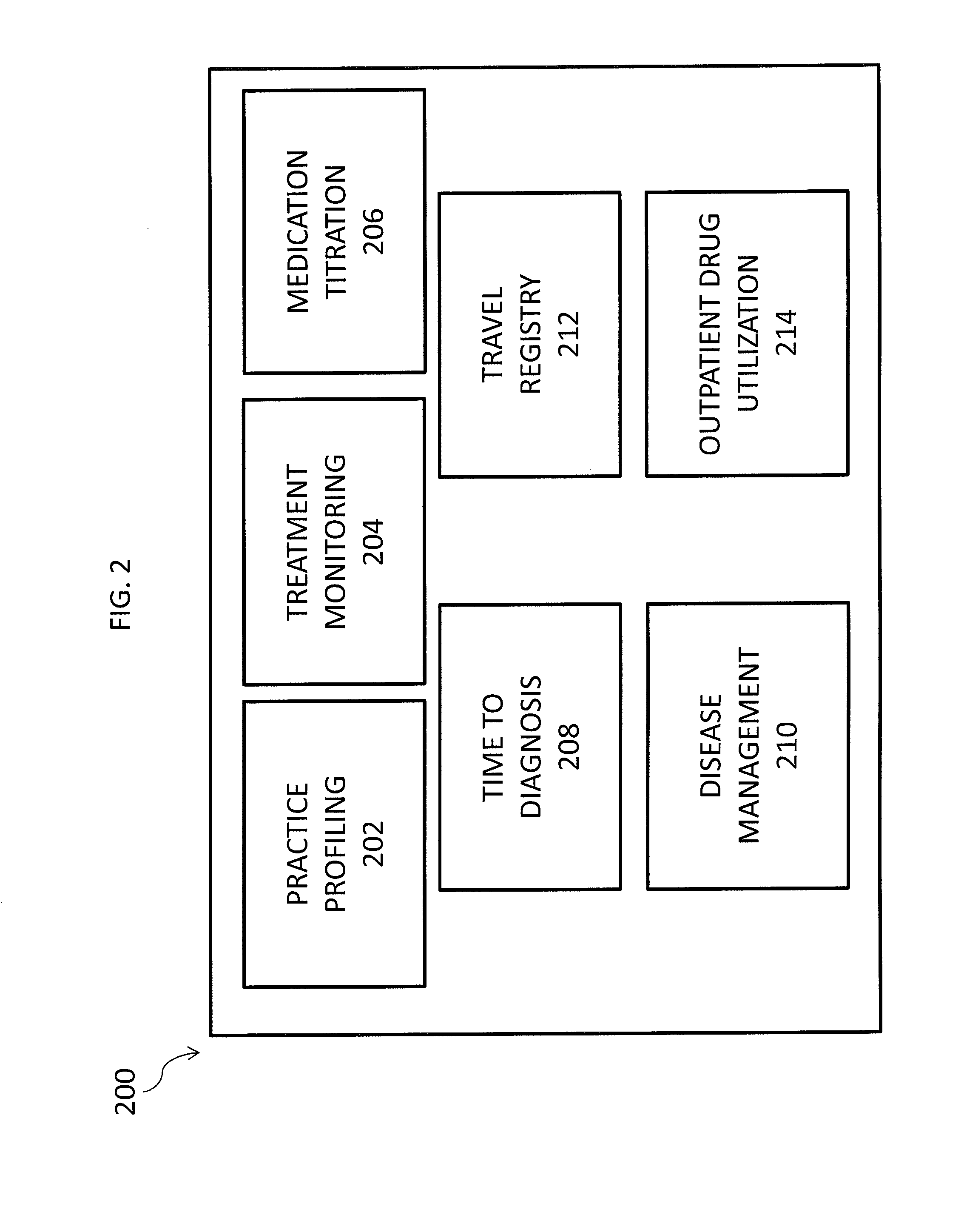System and methods for health analytics using electronic medical records
a health analytics and electronic medical record technology, applied in the field of health care, can solve the problems of poor outcomes, high cost, and declining primary care workforce, and achieve the effect of improving health care quality and facilitating data transfer
- Summary
- Abstract
- Description
- Claims
- Application Information
AI Technical Summary
Benefits of technology
Problems solved by technology
Method used
Image
Examples
Embodiment Construction
[0047]The invention is based upon a far more sophisticated approach to health analytics that takes full advantage of a robust data repository built from EMRs. The functionalities of the system and the flow of information across an organization are shown in FIG. 1.
[0048]The system and methods according to the invention supports an entire range of operations from surveillance to problem resolution. Its components facilitate the interpretation of raw data, identify and prioritize cases, direct workflow to different personnel, identify failure modes within the institution, use of the institution's own data to build standards and decision rules, and apply those rules to individual patients to maximize outcomes.
[0049]The process begins with data extraction and assembly to maximize data quality 102. Complex clinical variables are synthesized from the raw data 104. In many cases, these advanced metrics (such as a disease trajectory) are of greater relevance to the problem at hand than the r...
PUM
 Login to View More
Login to View More Abstract
Description
Claims
Application Information
 Login to View More
Login to View More - R&D
- Intellectual Property
- Life Sciences
- Materials
- Tech Scout
- Unparalleled Data Quality
- Higher Quality Content
- 60% Fewer Hallucinations
Browse by: Latest US Patents, China's latest patents, Technical Efficacy Thesaurus, Application Domain, Technology Topic, Popular Technical Reports.
© 2025 PatSnap. All rights reserved.Legal|Privacy policy|Modern Slavery Act Transparency Statement|Sitemap|About US| Contact US: help@patsnap.com



